By Hawaii.com Team
Big Island
Big Island Beaches
Maui
Maui Beaches
Things to Do on Maui
Things to Do on the Big Island
Visiting Hawaii

Wide shot of Punalu’u black sand beach, Big Island, Hawaiʻi
This article was originally published on May 31, 2022, and was updated Oct. 8, 2025.
When most people think of Hawaiian beaches, golden or white sands come to mind. But for a truly unique experience, Hawaiʻi’s black sand beaches are a must-see. These otherworldly shorelines are created when molten lava meets the ocean, rapidly cools and shatters into fine, jet-black sand.
They’re more than just visually striking — many black sand beaches in Hawaiʻi are culturally significant, host endangered wildlife like honu (green sea turtles) and offer dramatic coastal scenery. While not all are suitable for swimming, they are perfect for photography, picnics and bucket-list travel experiences.
While there are no black sand beaches on Oʻahu and Kauaʻi – these islands are older geologically, with no active volcanic activity to create new black sand – there is one on Maui and seven on Hawaiʻi Island (Big Island).
Pro Tip: If you want to explore the best black sand beaches in Hawaiʻi, the Big Island is your top destination.
Black sand in Hawaiʻi is made from volcanic rock, primarily basalt, formed when lava from active volcanoes like Kīlauea flows into the ocean. This sudden cooling causes the lava to fragment into tiny pieces, eventually forming entire beaches over time.
Honu are often seen basking on black sand beaches because the dark sand retains heat, making it an ideal spot for them to warm up and rest.
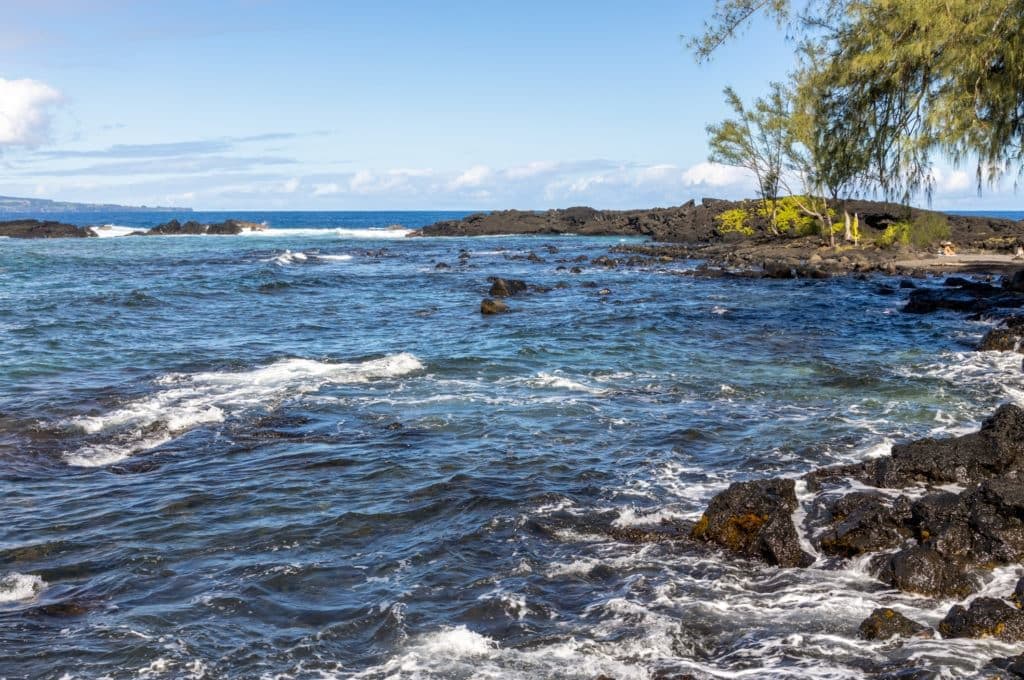
Richardson Ocean Park on Big Island, Hawaii.
Location: Kau Coast, near Nā‘ālehu
Facilities: Restrooms, picnic tables, parking
Best For: Wildlife watching, photos, family outings
Punaluʻu Beach is the most famous black sand beach in Hawaiʻi and the easiest to access. It’s renowned for its shimmering black sand, sea turtle sightings and picnic-friendly atmosphere.
Not ideal for swimming due to strong currents.
Pro Tip: Bring a camera, pack a lunch and keep a respectful 10 ft. distance from sea turtles.
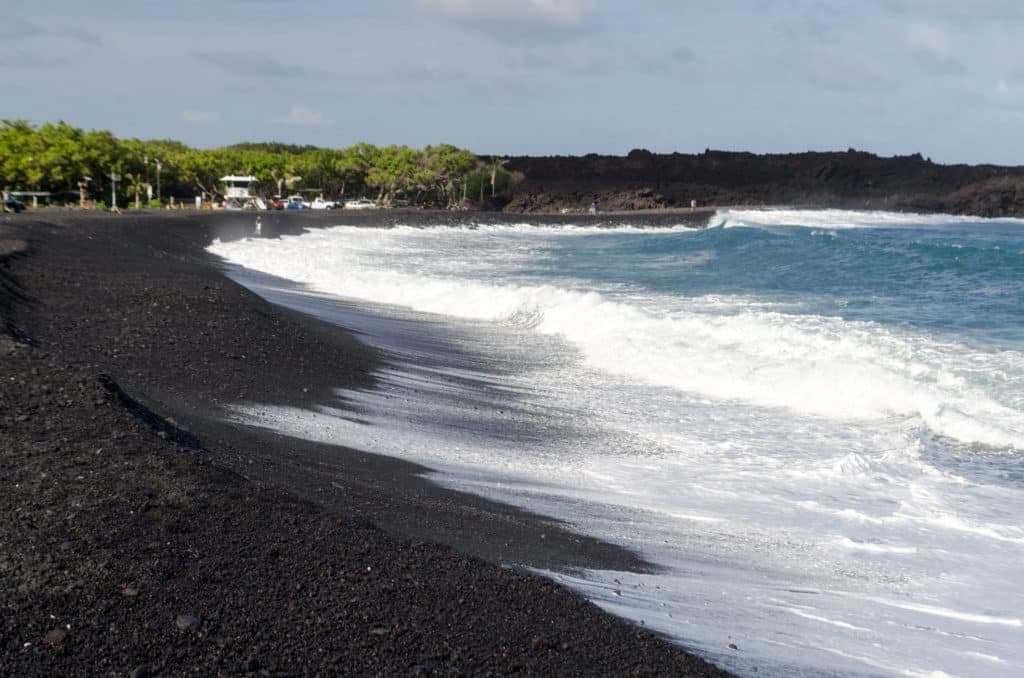
Rough surf at the edge of the black sands of Pohoiki beach, Isaac Hale Beach Park, Big Island, Hawaii
Location: Hilo
Facilities: Showers, restrooms, picnic areas, lifeguards
Best For: Snorkeling, tide pools, family-friendly beaches
Richardson Beach features a mix of black and green sand (from olivine minerals). It’s one of the few swimmable black sand beaches in Hawaiʻi and a favorite for snorkeling thanks to calm, shallow waters.
Location: Isaac Hale Beach Park, Puna Coast
Best For: Hot springs, geology buffs, nature lovers
Formed during the 2018 Kīlauea eruption, Pohoiki is one of the newest beaches on Earth. Inland, you’ll find natural thermal ponds surrounded by lava flows — a surreal experience you won’t find anywhere else.
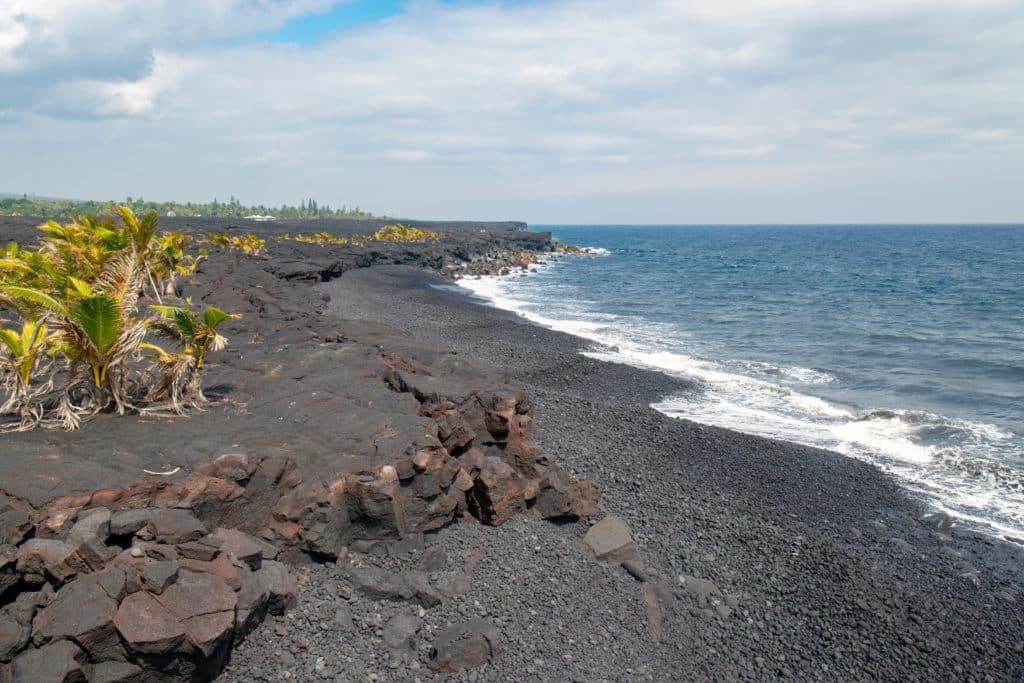
Kaimu Beach
Best For: Photography, volcano lovers
Not for: Swimming
Located near Kalapana, this young black sand beach was formed after the original beach was destroyed in a 1990 lava flow. It’s a raw, evolving coastline with lava fields and baby coconut palms beginning to regrow.
Best For: Dolphin sightings, alternative vibes
Access: Steep trail down a cliff
Nicknamed “Dolphin Beach,” Kehena is known for occasional spinner dolphin sightings and its clothing-optional culture. It’s not ideal for swimming but perfect for sunbathing or escaping the crowds.
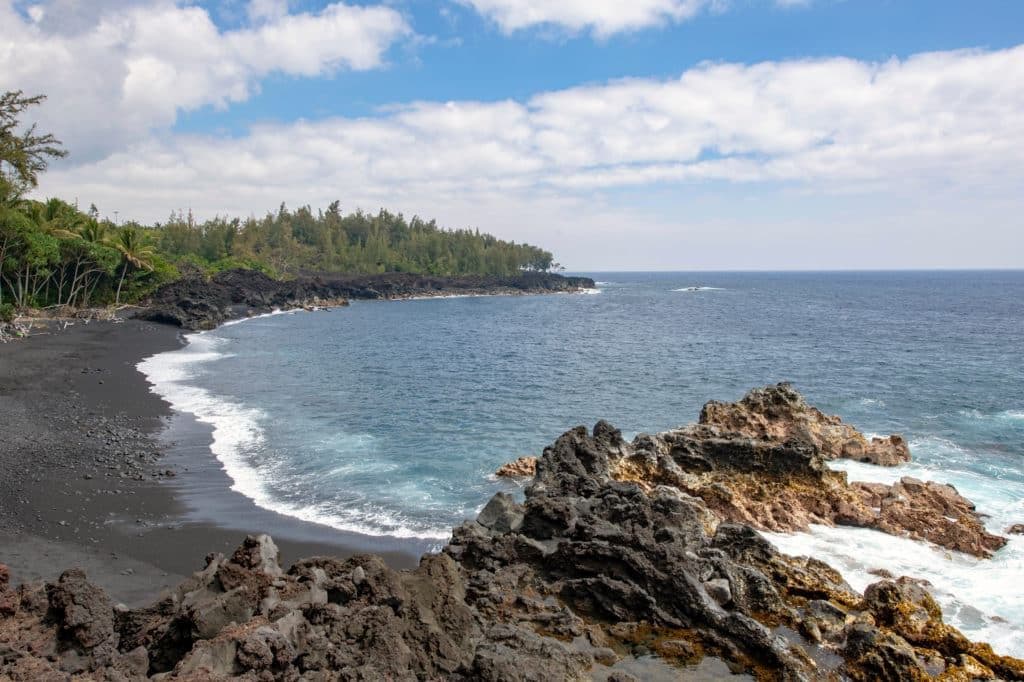
Kehena Beach, Big Island, Hawaiʻi
Location: Northern tip of Big Island
Best For: Hikers, photographers, nature seekers
Access: 25-minute hike down a steep trail
Pololū Valley offers a black sand beach with dramatic cliffs, lush valleys and breathtaking views. Swimming isn’t advised, but the short hike makes it a favorite for adventurers and landscape photographers.

Stunning view of rocky beach of Pololu Valley, Big Island, Hawaii, taken from Pololu trail, Hawaii, USA
Note: As of 2025, Waipiʻo Valley is closed to non-residents due to safety concerns. However, the Waipiʻo Lookout still offers one of the most scenic views in Hawaiʻi.
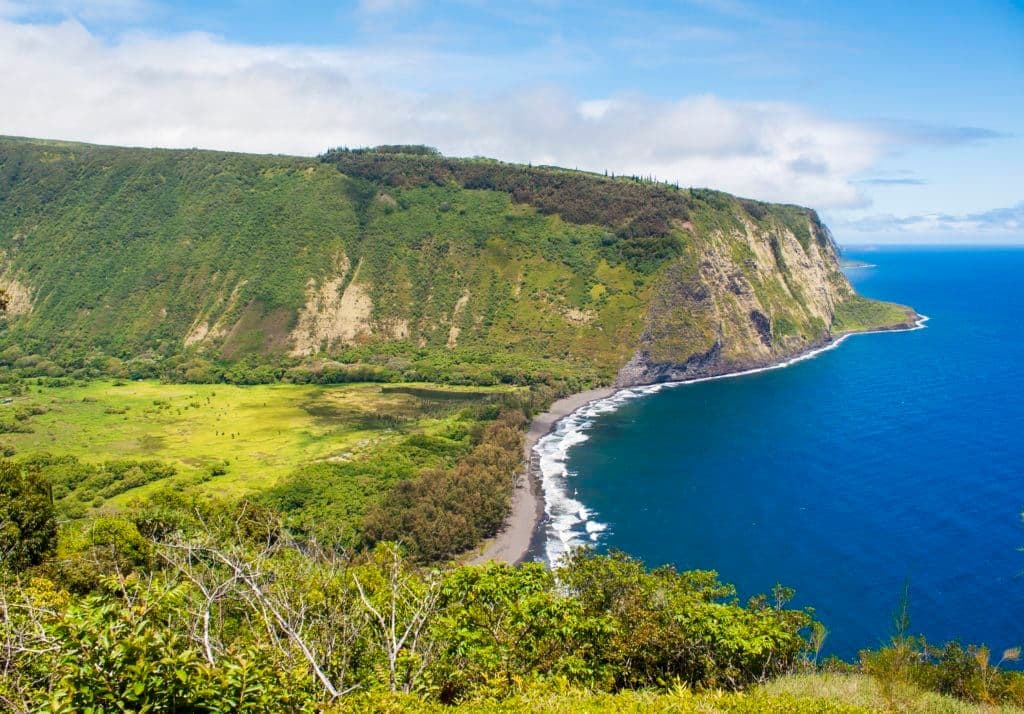
A grand view of the Waipio Valley on the Big Island of Hawaiʻi.
Maui’s Best Black Sand Beach
Waiʻānapanapa State Park – Maui’s Iconic Black Sand Destination
Location: Near HānaReservations Required: Yes (Online, in advance)Facilities: Restrooms, camping, ADA accessBest For: Families, sightseeing, sea arches, caves
Waiʻānapanapa Beach is Maui’s most famous black sand beach and one of the most photographed. Located along the scenic Hāna Highway, it offers lava tubes, blowholes, sea caves, and panoramic cliffside trails.
Pro Tip: Book your reservation early — this is one of the most in-demand attractions on Maui.
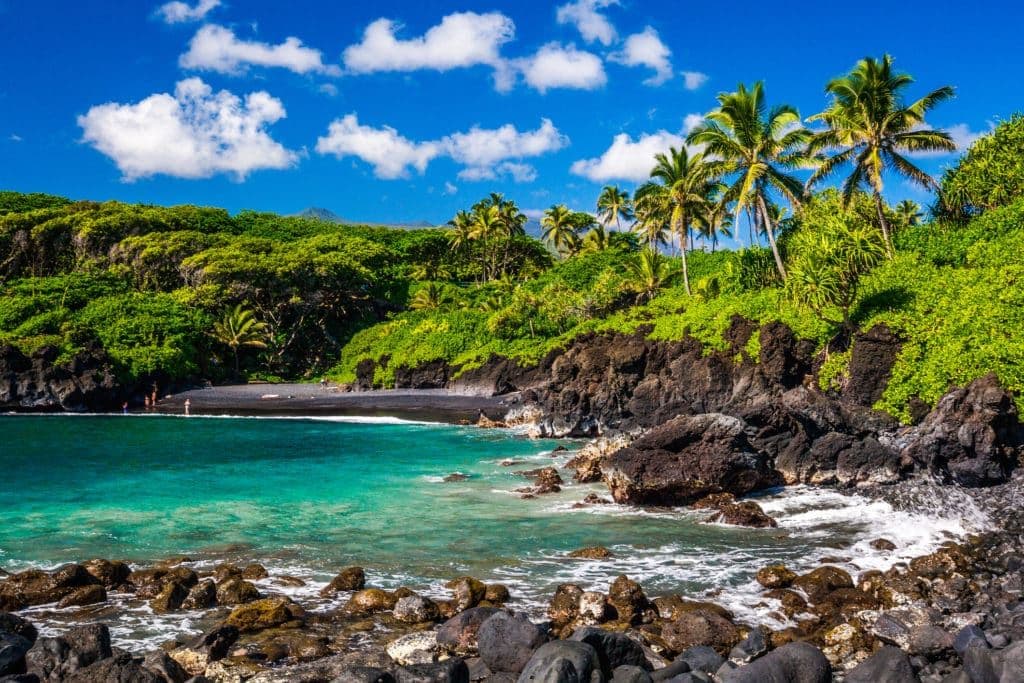
Waiʻānapanapa State Park, Maui black sand beach
Respect Wildlife: Stay at least 10 feet from sea turtles and never touch them.
Safety First: Many black sand beaches are not safe for swimming due to strong currents and rocky shores.
Don’t Take Sand: Removing sand or rocks is illegal and harmful to fragile ecosystems.
Plan Ahead: Some beaches require hikes, reservations or entry fees.
Accessibility: Waiʻānapanapa and Punaluʻu are among the most accessible black sand beaches.
The Big Island has the majority, with at least 7 major black sand beaches.
Some, like Richardson Ocean Park, are safe for swimming. Most others are best for sightseeing only.
Yes. It’s illegal to remove black sand from beaches or volcanoes in Hawaiʻi. Always leave nature as you found it.
Yes, Waiʻānapanapa State Park is Maui’s most iconic black sand beach.
Absolutely. Whether you’re a nature lover, photographer or simply seeking a once-in-a-lifetime experience, Hawaiʻi’s black sand beaches offer an unforgettable look at the islands’ volcanic power and natural beauty. If you’re visiting Hawaiʻi Island or Maui, make sure to add at least one black sand beach to your itinerary.
Join our newsletter for travel inspiration, insider tips and the latest island stories.
By subscribing, you agree to receive emails from Hawaii.com. You can unsubscribe anytime. See our Privacy Policy.